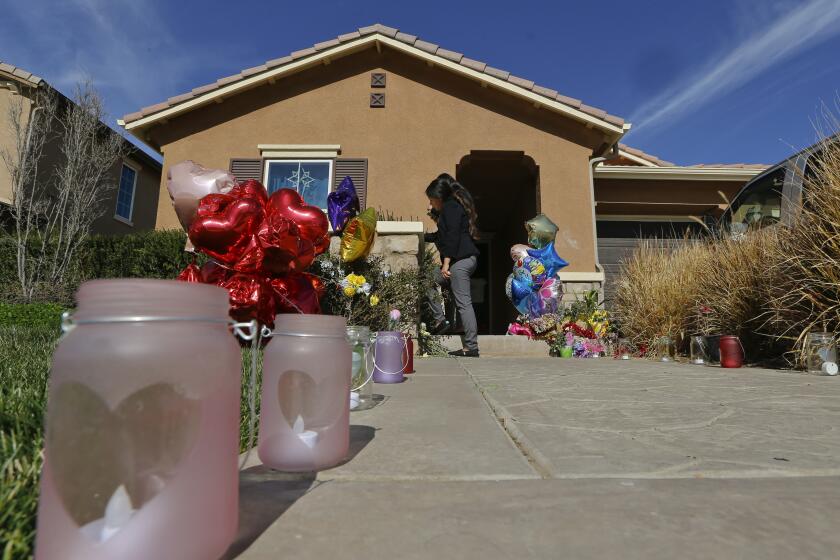Crews Shore Up Levees as Concerns Rise Over Upkeep
Since a dirt levee broke last week in the farmlands near Stockton, emergency workers have been fighting a three-front war against water that as of Wednesday had forced the evacuation of more than 300 people.
At first, workers focused on fixing a levee along the Sacramento-San Joaquin River Delta that broke June 3 near the town of Holt, Calif.
Then they noticed water creeping up another levee, threatening to overcome a major highway in the area. So they diverted 10 bulldozers to the second levee and worked all night to shore it up.
Then, intense winds, with gusts up to 55 mph, slapped floodwaters against a third levee, which if breached would have wiped out the only road to two islands and stranded at least 178 residents.
By Wednesday, workers had tamed the situation at all three levees and were settling in for a repair effort that authorities said could take months. The flooding caused $35 million in damage to buildings and crops, according to San Joaquin County records, and it will cost $36.5 million to repair the levees.
Evacuees -- many of them migrant workers who pick crops on the vast islands that dot the delta region between San Francisco and Sacramento -- don’t know when they will be able to return.
“It’s been us against the elements,” said Donald Strickland, a spokesman for the California Department of Water Resources.
The situation has focused new attention on the state’s network of aging levees, which protect farmland from flooding.
Critics have long said that the state needs to do a better job of maintaining the levees, many of which were built decades ago without professional engineering.
“This is just an alarm bell,” said John Cain of the National Heritage Institute, who has studied California’s levees. “It’s not the first time it’s happened. And it’s not the worst that could happen.”
The levees were built by farmers who wanted to cultivate the rich but flood-prone soil along the delta, a network of waterways that provides Southern California with drinking water and the Central Valley with agricultural water.
The levees have been reinforced piecemeal over the years by pushing more dirt and rocks up against them.
There are 6,000 miles of levees in the state, many of them protecting prime farmland. But only about a third of that is maintained by the government, said Jason Fanselau of the U.S. Army Corps of Engineers.
The rest -- including the one that failed -- are in private hands.
The biggest worry about the levee system is that a major failure could send salt water from the San Francisco Bay into the freshwater delta, potentially harming a key source of drinking water.
The June 3 levee break occurred when a stream of water carved a huge gash in the barrier, turning 12,000 acres of farmland into a 12,000-acre lake.
That night, officials also found that a nearby levee protecting California 4 -- the main route running parallel to the delta -- was in danger of overflowing because of the growing floodwater.
So they scrambled to add 56,000 yards of dirt onto the levee, which raised it an additional 3 feet -- just enough to protect against a nearby river’s high tides.
Workers then moved on to the next crisis.
Over the weekend, waters that had flooded the island began eroding a third levee, eating away at the dirt and rock from the inside.
“You have to understand these levees were not designed to keep water in; they were supposed to keep water out,” Strickland said.
So workers improvised, lining the interior of the levee in black plastic.
With the situation stabilized, the repair of the original levee break could take an additional 45 days, authorities estimate, and it could take up to six months to pump water out of the farmland.
The cause of the levee break has not been determined.
Emergency agencies have struggled to help farmworkers who were left homeless by the flood.
“At first, they were running from us because a lot of them were undocumented migrant workers,” said Lee Veselak, director of the local Red Cross chapter.
After listening to the pleas of a local nun, many evacuees ended up at the Red Cross, which gave them cots to sleep on in a Stockton high school gym.
More to Read
Sign up for Essential California
The most important California stories and recommendations in your inbox every morning.
You may occasionally receive promotional content from the Los Angeles Times.










